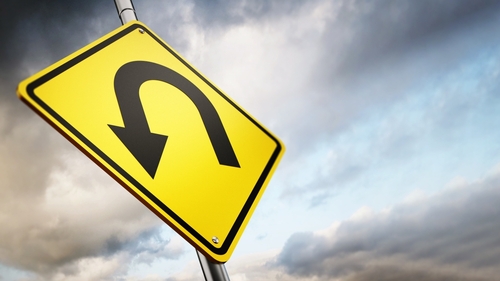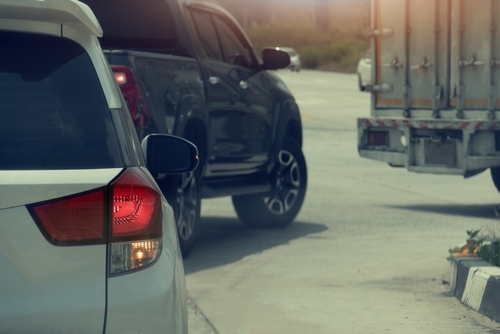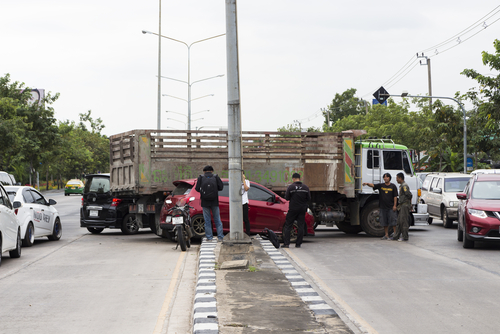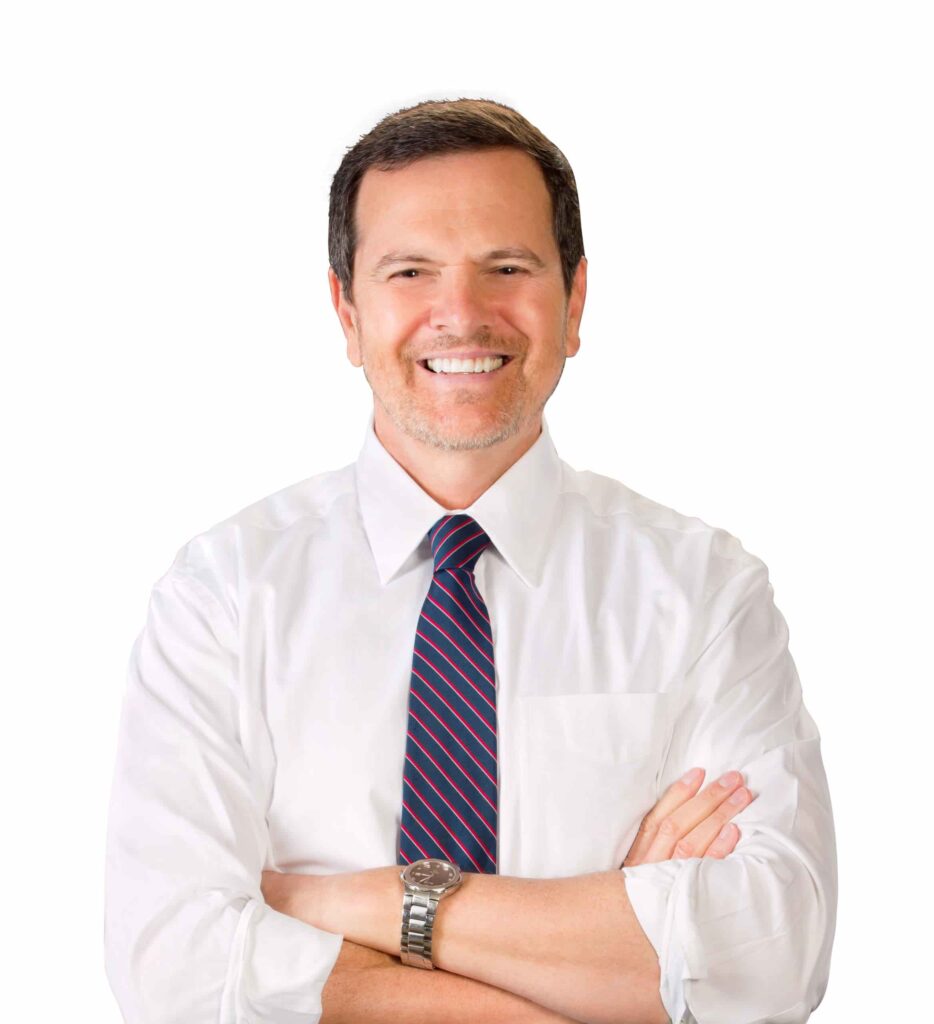Steven A. Bagen | January 22, 2024 | Car Accidents

Making a U-turn on Interstate 75 is illegal under Florida Statute §316.1515 except for authorized vehicles and is an exceptionally dangerous act that frequently leads to catastrophic side-impact and head-on collisions. If you were hurt in one of these crashes, a Gainesville car accident lawyer can help you understand your legal rights and pursue the compensation you deserve.
The driver who performs such a maneuver is almost always considered the primary cause of the crash due to the clear violation of traffic law and the foreseeable risk they create for other drivers.
However, insurance companies for the at-fault driver will still conduct a thorough investigation, looking for any possible reason to argue you shared some of the blame, potentially reducing the compensation you recover.
If you have a question about an accident on I-75 caused by someone making a U-turn, call us. We will help you understand your options. Contact Steven A. Bagen & Associates, P.A for a no-cost case review at (800) 800-2575.
Key Takeaways for I-75 U-Turn Accidents
- The driver who made the illegal U-turn is almost always found at fault. Florida law explicitly forbids U-turns unless they are safe and do not interfere with traffic, a standard that is nearly impossible to meet on a high-speed interstate.
- The at-fault driver’s insurance will try to assign you partial blame. Insurers use Florida’s comparative negligence law to reduce their payout, making it essential to gather evidence that proves the other driver was 100% responsible.
- Objective evidence is time-sensitive and disappears quickly. Key data from vehicle black boxes, traffic cameras, and dashcams must be preserved immediately with a formal legal notice before it is overwritten or destroyed.
Why a U-Turn on I-75 Is a Recipe for Disaster

The Unforgiving Physics of a Highway Collision
The Speed Differential
Your vehicle is traveling at 70 mph or more. The turning vehicle has slowed dramatically, perhaps to 10-15 mph, to make the turn. This turns their car into a near-stationary wall of metal in your path. There is almost no time to react. How a Florida car accident attorney can help is by investigating the crash, proving fault, and pursuing full compensation for your injuries and losses.
The Point of Impact
These incidents rarely result in a minor fender-bender. They typically become devastating T-bone or head-on crashes. This type of collision is statistically more likely to cause severe or fatal injuries, including traumatic brain injuries, than nearly any other.
Predictability and Driver Expectation
No driver on I-75 anticipates another vehicle making a full U-turn across their lane of travel. The entire system of highway driving is built on the assumption that traffic will flow in one direction. An illegal U-turn violates this fundamental rule, making a collision almost unavoidable.
Real-World Consequences
A recent fatal crash on Florida’s Turnpike involving a semi-truck’s U-turn, which resulted in three deaths, shows the tragic reality of these maneuvers.
Florida Law Places the Onus on the Turning Driver
Florida law states that a U-turn is only permissible if it can be done “in safety and without interfering with other traffic.” On a road like I-75, meeting this standard is practically impossible for a civilian vehicle. The law exists to prevent these exact scenarios. The legal system, therefore, starts with a strong presumption of fault against the driver who made the illegal turn.
Who Is Held Responsible After an Illegal U-Turn Crash?
Does a traffic ticket for the other driver automatically win my case? Not automatically, but it is strong evidence.
The other driver will likely receive a citation for violating Florida Statute §316.1515. This citation establishes a “presumption of negligence.” Negligence is a legal concept that means someone failed to act with reasonable care. Making a U-turn on an interstate is a clear failure of that duty.
What Happens if Their Insurance Company Tries to Blame Me?
Insurance adjusters will investigate every angle to see if you could have done something differently. They might ask: Were you speeding? Were you distracted? Did your headlights work?
Their goal is to invoke a legal doctrine called “comparative negligence.” Think of fault as a pie chart. The insurance company wants to assign a slice of that pie, however small, to you. Under Florida’s modified comparative fault law, if you are found to be more than 50% responsible for the accident, you recover no compensation. If you are found to be 10%, 20%, or any percentage up to 50% at fault, your final compensation award is reduced by that amount. Our role is to build a case that ensures no blame is unjustly shifted onto you.
Who Was Hurt and How? Tailoring the Legal Approach to Each Person Involved
After a highway crash caused by an illegal U-turn, the facts of the accident may be the same, but the legal path forward depends heavily on who you were when it happened. A driver, a passenger, or the victim in a commercial vehicle collision each faces a different set of questions, responsibilities, and rights. A car accident lawyer can help you understand these differences, protect your rights, and pursue fair compensation based on your specific circumstances.
Let’s break this down clearly.
Were You Driving the Car That Was Hit?
If you were the one behind the wheel, the burden falls on you to prove that you were driving safely and that the other driver’s actions directly caused the crash.
From the moment the crash happened, every move matters: whether you braked, where you were in your lane, and how fast you were going. Insurance companies will comb through these details, and our job is to gather evidence that answers those questions with data.
We’ll look at your vehicle’s black box, traffic camera footage (if available), and any nearby dashcams. We’ll also collect witness statements and, if needed, bring in crash reconstruction experts who can read the skid marks and debris fields like a storybook.
The more clearly we can tell your side of the story, the harder it is for anyone to distort it.
Were You a Passenger in the Car That Was Hit?
As a passenger, you don’t have to prove who caused the crash. You just have to show that you were injured.
You might not realize this, but you can bring a claim against the driver who made the illegal U-turn and possibly against the driver of the car you were in, if they share any fault. That may sound uncomfortable, especially if the driver is a friend or family member. But keep in mind: it’s their insurance company, not them personally, who pays for the damages. Contact a lawyer to review your situation and make sure your claim is handled properly from the start.
You’re entitled to be made whole. That includes medical bills, time you missed from work, and the pain you’re likely still dealing with.
Were You Hit by a Commercial Truck?
If the U-turn was made by a semi-truck, delivery van, or other commercial vehicle, the case becomes more layered. It’s no longer just about what the driver did.
We’ll ask:
- Was the driver properly trained?
- Were they on a tight delivery schedule that encouraged risky shortcuts?
- Did the company know—or ignore—past safety issues with this driver?
In these cases, we look into the company’s hiring practices, training protocols, and even their GPS logs. It’s about painting the full picture, not just the last few seconds before impact.
Also, commercial vehicles typically carry higher insurance limits. That means more resources may be available to cover your losses, but it also means the insurer will likely scrutinize your claim more aggressively.
The Unseen Evidence: Building a Case for a High-Speed U-Turn Accident

The official police report is only a starting point. After an accident, stories change. A driver who admitted fault at the scene might later claim you were the one driving erratically. This is why we gather independent evidence to establish the facts. Where do most car accidents occur? Often, they happen on high-speed roads like interstates or busy intersections where one driver’s sudden or illegal maneuver leaves others with no chance to avoid impact.
Uncovering the Data That Defines the Crash
We look for objective data that tells the story of the seconds before impact.
- Event Data Recorders (EDRs): Also called a “black box,” this device is in most modern vehicles. It records key data like vehicle speed, brake application, and steering angle just before a collision. This data definitively proves your speed and refutes claims of you being at fault.
- Traffic and Dashcam Footage: We investigate whether any FDOT traffic cameras, nearby business surveillance systems, or other drivers’ dashcams captured the incident. A video showing the illegal U-turn is undeniable.
- Accident Reconstruction: In serious cases, we work with former law enforcement officers and forensic engineers. They analyze skid marks, vehicle damage, and debris fields to scientifically reconstruct the crash, showing how the U-turn created an unavoidable hazard.
- Witness Statements: We contact and interview anyone who saw the crash. Independent witnesses who confirm they saw the other vehicle cut across the median provide powerful testimony.
Preserving Evidence Before It Disappears
This evidence is time-sensitive. Traffic camera footage is frequently overwritten within days or weeks. A vehicle involved in a crash might be repaired or sold, destroying the EDR data forever.
This is why one of our first steps is to send a spoliation letter (a formal legal notice) to the at-fault driver and their insurance company, demanding they preserve the vehicle and all its electronic data. It prevents them from destroying evidence we need.
What Does Full Compensation Look Like in Florida?
We pursue the maximum compensation available under the law, which typically falls into two categories:
Economic Damages: The Tangible Financial Losses
These are the costs that come with a clear price tag.
- Current and Future Medical Bills: This includes everything from the initial ambulance ride and emergency room care to future surgeries, physical therapy, and necessary medications.
- Lost Wages and Diminished Earning Capacity: If you miss work, you are compensated for the income you lost. If your injuries prevent you from returning to your previous job or earning what you once did, we calculate that long-term loss.
- Property Damage: The cost to repair or replace your vehicle.
Non-Economic Damages: The Intangible Human Cost
These losses are real, but they do not come with a receipt. They acknowledge how the injury has rewritten aspects of your life.
- Pain and Suffering: Compensation for the physical pain, discomfort, and emotional distress the accident and your injuries have caused.
- Mental Anguish: This addresses the anxiety, depression, or post-traumatic stress that may develop after a violent highway collision.
- Loss of Enjoyment of Life: If your injuries prevent you from hiking, playing with your children, or engaging in hobbies you once loved, this seeks to compensate for that loss.
Frequently Asked Questions About I-75 U-Turn Accidents
Can emergency vehicles legally make a U-turn on I-75?
Yes, authorized emergency vehicles like police cars and ambulances may perform U-turns when responding to an emergency, but they must do so with warning lights and sirens activated to alert other drivers. This exception does not apply to any other vehicle. Knowing what to expect after a car accident can help you stay calm, document the scene properly, and protect your rights while awaiting help or legal guidance.
What if the driver who hit me was driving a commercial truck?
The case becomes more complicated. We would investigate not only the driver but also the trucking company to see if they had inadequate training policies or encouraged drivers to violate traffic laws to save time.
I was a passenger in the car that was hit. Am I eligible to file a claim?
Yes. As an injured passenger, you have the right to file a claim against the at-fault driver’s insurance policy.
How long do I have to file a lawsuit in Florida?
In Florida, the statute of limitations for a personal injury claim is generally two years from the date of the accident. We advise beginning the process well before this deadline approaches.
You Probably Did Nothing Wrong. Don’t Let an Insurance Company Suggest Otherwise.

You were driving safely on the highway when someone else made a reckless decision. You should not be penalized for their actions. The at-fault driver’s insurance provider may seem helpful, but they have a financial interest in paying out as little as possible.
Our role is to handle the entire legal process, from preserving evidence to negotiating with the insurance company, so you can focus on your recovery. Let us take care of the details.
Call Steven A. Bagen & Associates, P.A for a confidential, no-cost discussion about your case at (800) 800-2575.
